I might be the only tourist in history to have visited Kontum in Vietnam’s central highlands twice in a month. I didn’t see any other tourists on either visit so there's not likely to be much competition for that prize. Kontum is still well off the Vietnam travel radar - reason enough to consider checking it out.
I was charmed by the place. My recent visits were my first in 25 years of travelling in Vietnam.
The town is delightfully mellow and friendly. The surrounding countryside, dotted with ethnic minority villages, is beautiful and interesting There’s more coming on Kontum soon.
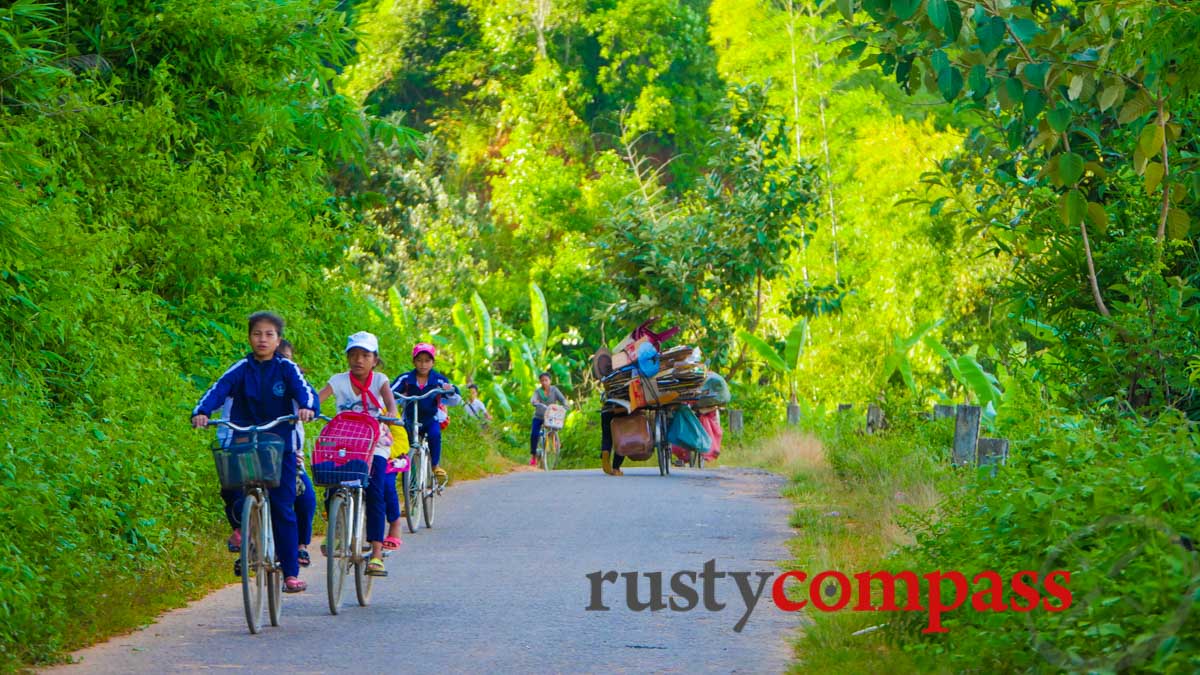
Photo: Mark Bowyer Kontum moves at a pleasant speed.
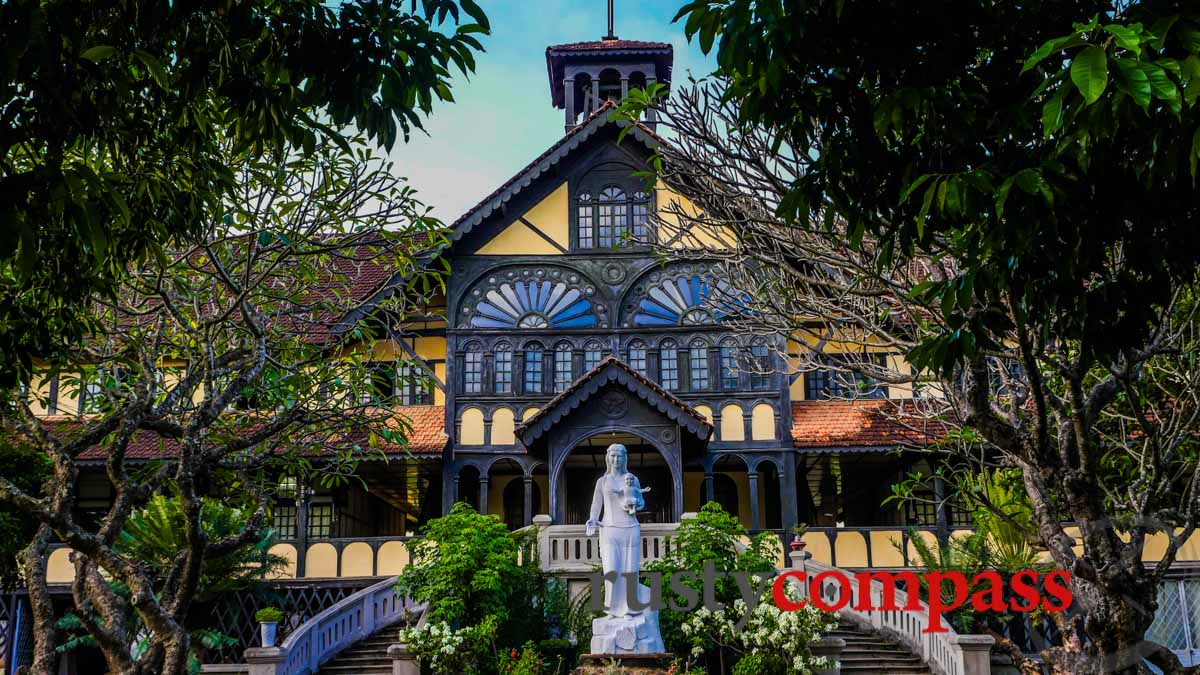
Photo: Mark Bowyer Kontum's impressive 1935 seminary building.
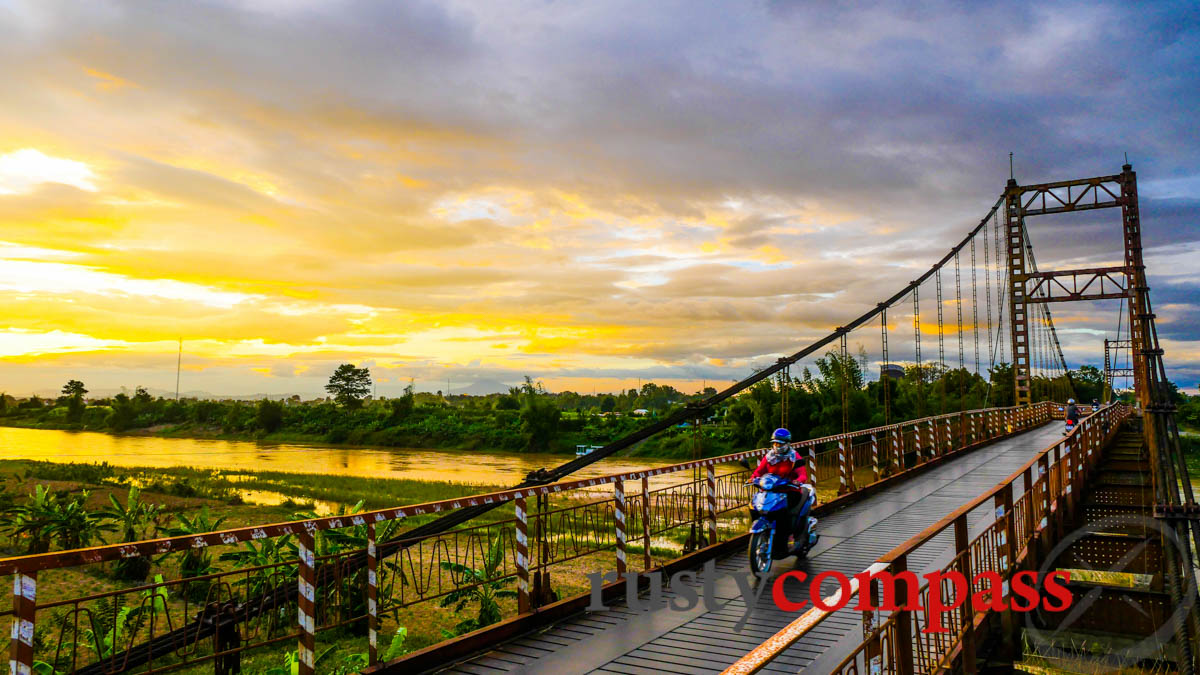
Photo: Mark Bowyer Crossing the Dakbla River, Kontum
If you don't have time to read this blog, check out the video above.
Part of my interest in Kontum was because of its proximity to a border crossing with Laos, around 40 kms west of the city, at a place called Bo Y.
Last year I travelled into northern Laos from Dien Bien Phu in Vietnam's far north and loved that trip. This time, I thought I’d approach southern Laos from another rarely crossed border - travelling the 400km between Kontum and Pakse.
We struggled to get information about buses and ended up deferring to our hosts at the Thinh Vuong Hotel. We’d heard rumours that there are good quality buses travelling between Kontum and Pakse but we never saw any evidence of them.
Our bus was a dud. It looked ok from the outside. Inside it was packed with all kinds of goods headed to Laos. It wouldn't have been good in an accident with a mix of fruit, vegetables, generators, vehicle engines, one truck axel and God knows what else, all packed up behind the passengers.
It was pretty grubby. Needed a good scrub. And after 11 hours aboard, we did too.
There was no air-con - which would have been unbearable in the hottest months of the year. Luckily, the temperature was pleasant in November for our journey so the fresh air blowing in was fine.
Leg room was the biggest problem. Since most passengers are Vietnamese, the seat pitch is made for the slighter and shorter Vietnamese frame. It didn’t work well for me or my friend Joe. Both of us are 90+ kilos and more than 6ft tall.
To get around the space problem, we booked two seats at 220,000 dong each. 440,000 or around 20US was a fairly high price to pay for a bus of this standard.
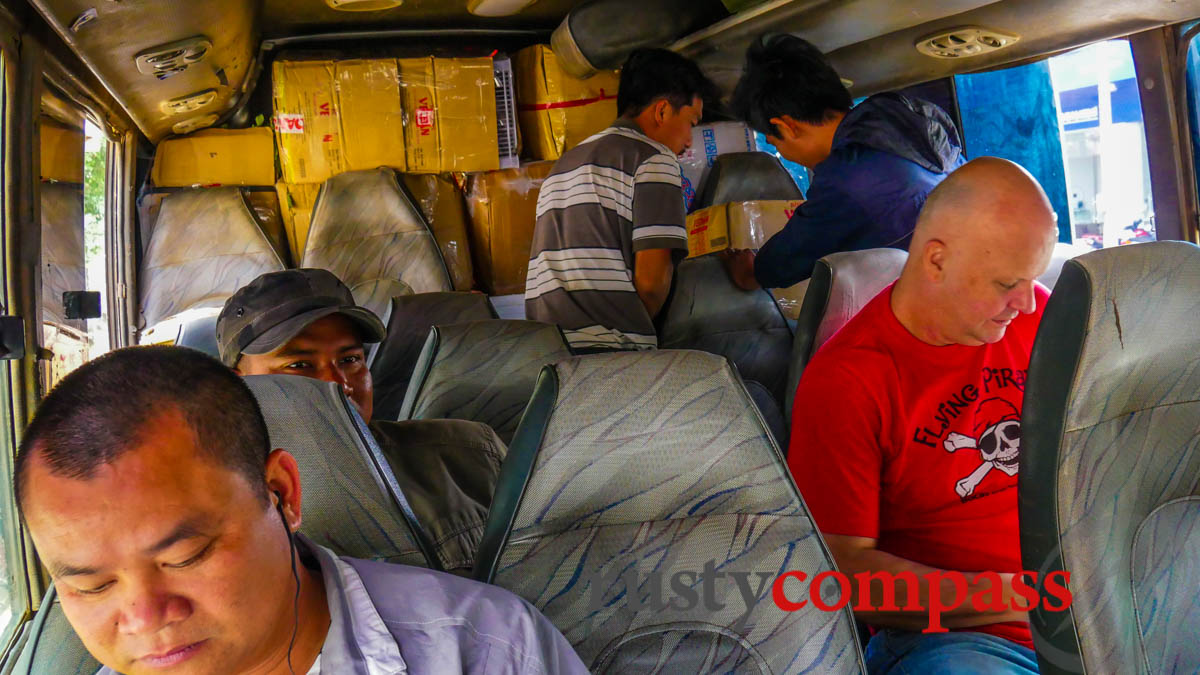
Photo: Mark Bowyer Packin' em in. Passengers and freight.
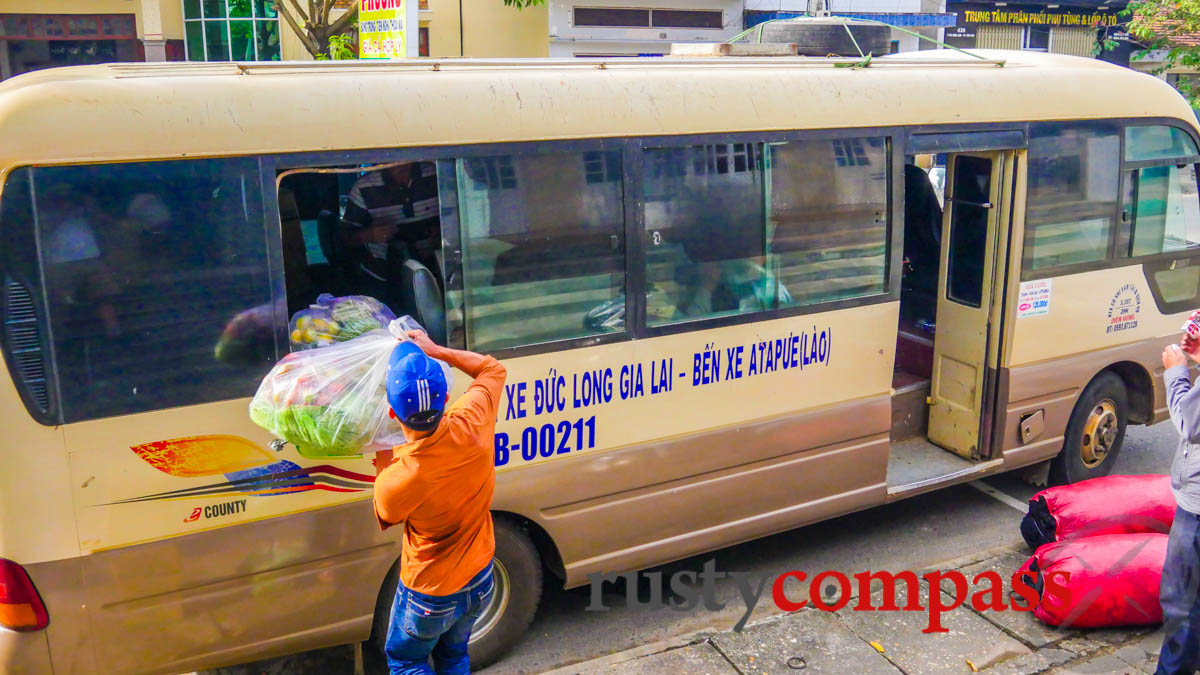
Photo: Mark Bowyer Loading the cargo for Laos
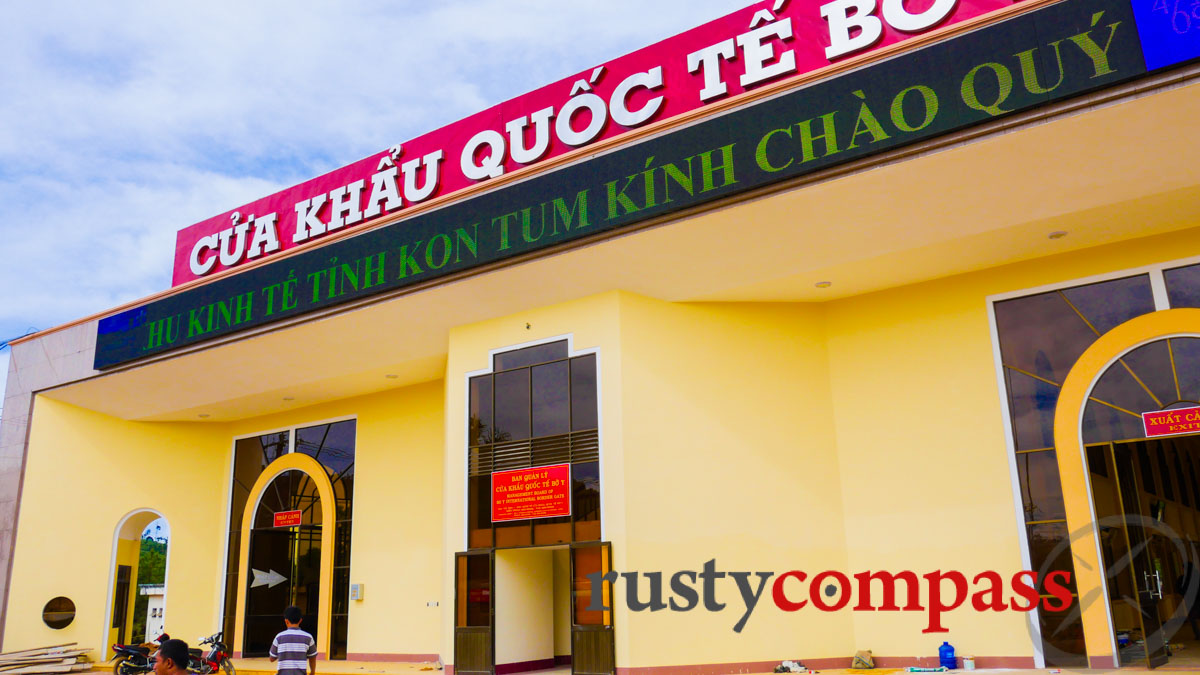
Photo: Mark Bowyer The Bo Y border. Moved smoothly.
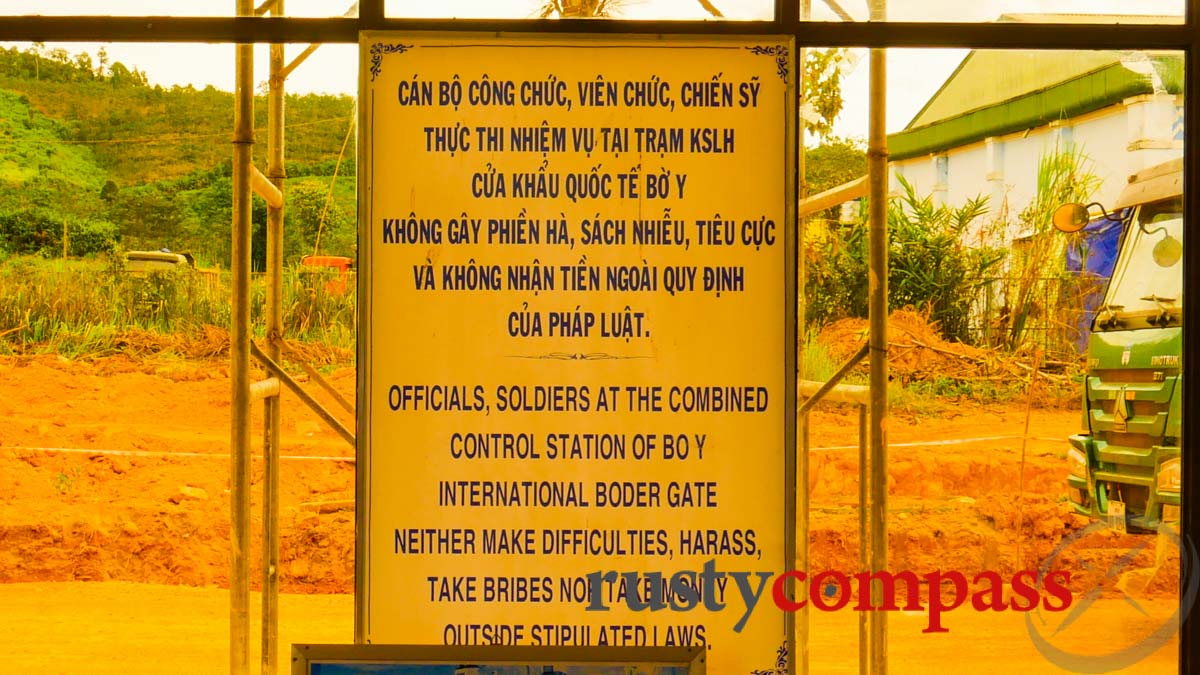
Photo: Mark Bowyer Directive or optimistic description?
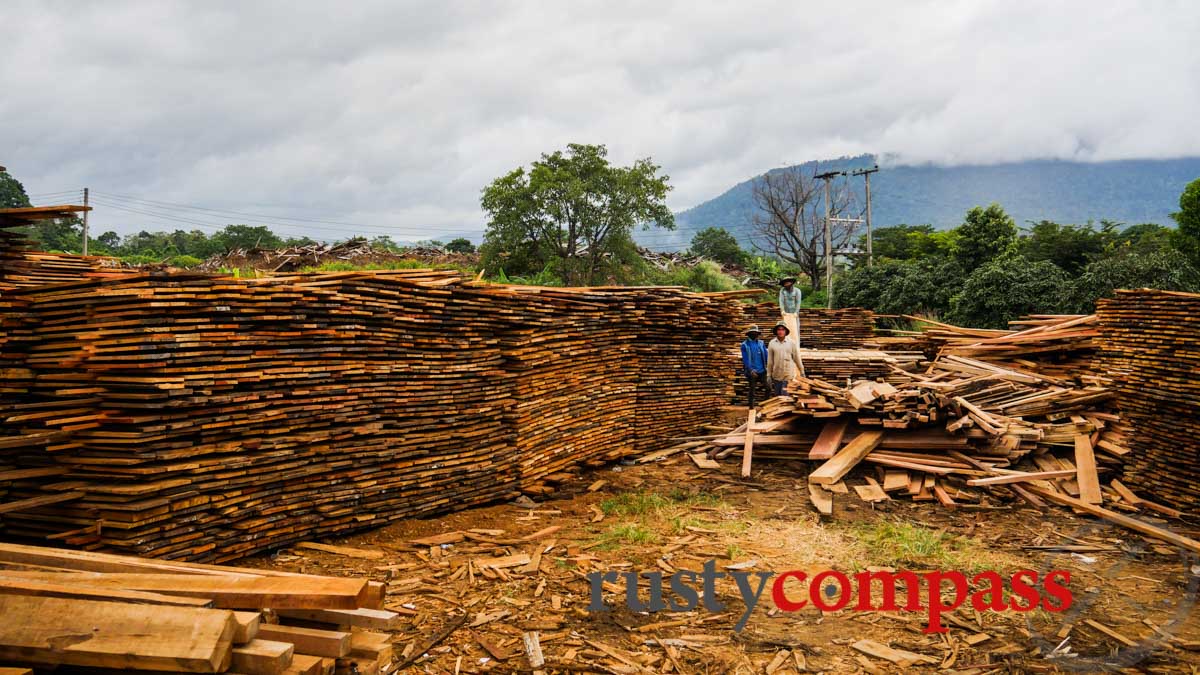
Photo: Mark Bowyer Vietnamese timber yard in the middle of Laos.
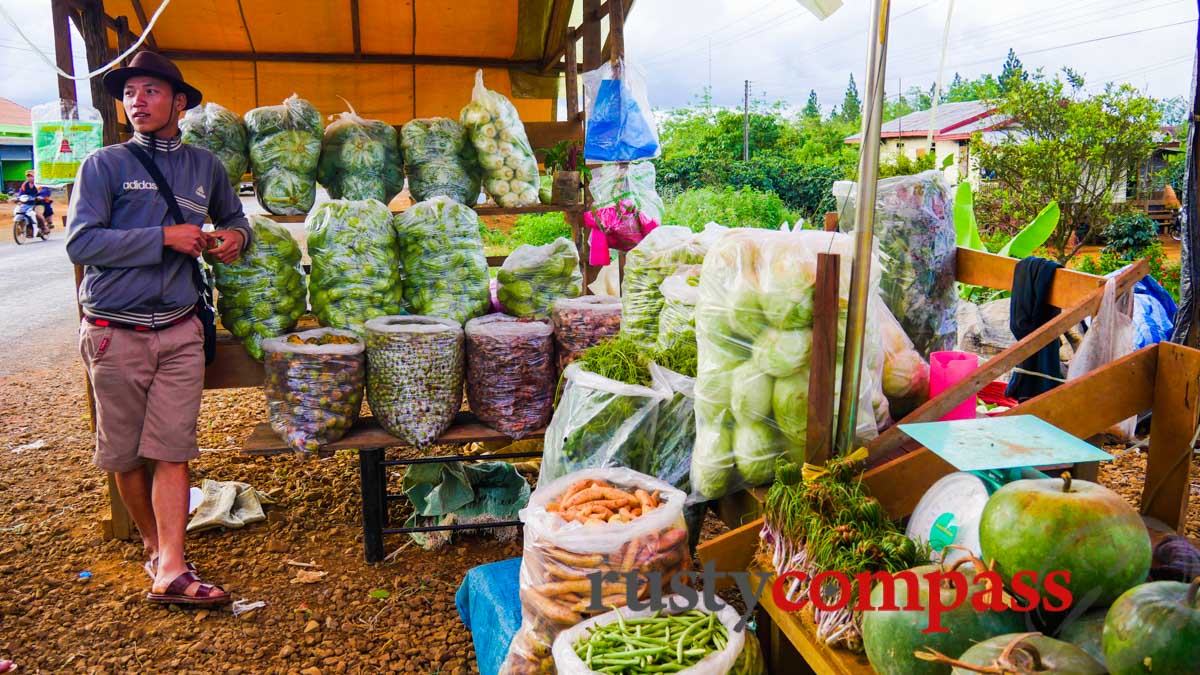
Photo: Mark Bowyer Some of our cargo ended up at this small market stall.
The buses in these remote areas are more about carrying goods, smuggling perhaps, between Vietnam and Laos, than they are about providing a passenger service. These are freight services masquerading as buses, with the passengers adding some credibility to the bus idea.
The fact that there were regular police check points on both sides of the border, requiring an efficient exchange of cash, gave off a whiff of something untoward. The most rapid of these transactions involved one of the bus guys standing at the passenger door with cash in his hand, ready to deliver as we approached the checkpoint. The police, who were clearly familiar the routine, took the payment as we passed and we continued our journey uninterrupted.
The border crossing was painless. The other passengers on our bus were all Vietnamese. They had to wait while our Lao visas were processed. All up it took perhaps 20 - 30 minutes. We didn’t see any other foreigners travelling the route. (more border details below).
There were no standout travel highlights to the day but the scenery in Laos was often picturesque - especially soon after crossing the border. On the Vietnam side, we passed by the former US airbase at Dak To (Tan Canh) about 40 kms north of Kontum. Dak To was the scene of major conflict in the 1960s and 70s. The air strip now lies abandoned in a cassava plantation.
The absense of forest in Vietnam's Central Highlands was a depressing reminder of the compehensive deforestation that has taken place since the Vietnam War. It's been so thorough that there's barely a tall tree in sight.
Things got better in Laos - but word is that logging in Laos, is now in overdrive as well. We saw trucks carrying large logs from Laos back into Vietnam.
I'm not sure of the legality of any of this.
We arrived at Attepeu in Laos in time for a late lunch and were joined by members of a recently commenced UXO, unexploded ordnance project, around Attapeu - a grim early reminder that for remote parts of Laos, the Vietnam War rages on. US bombs rained down on much of the Lao border with Vietnam during the 1960s and 1970s and unexploded ordnance continues to maim and kill. The clearance task is massive.
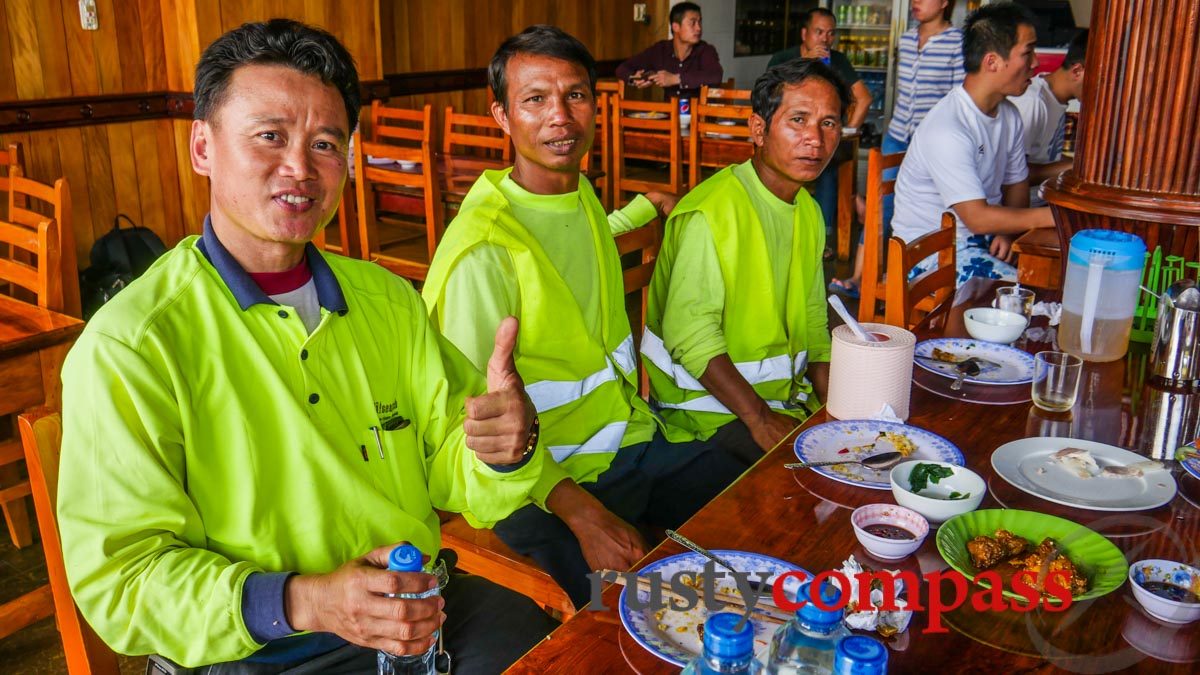
Photo: Mark Bowyer Unexploded ordinance team at Attapeu. The US War on Laos drags on 40 years later.
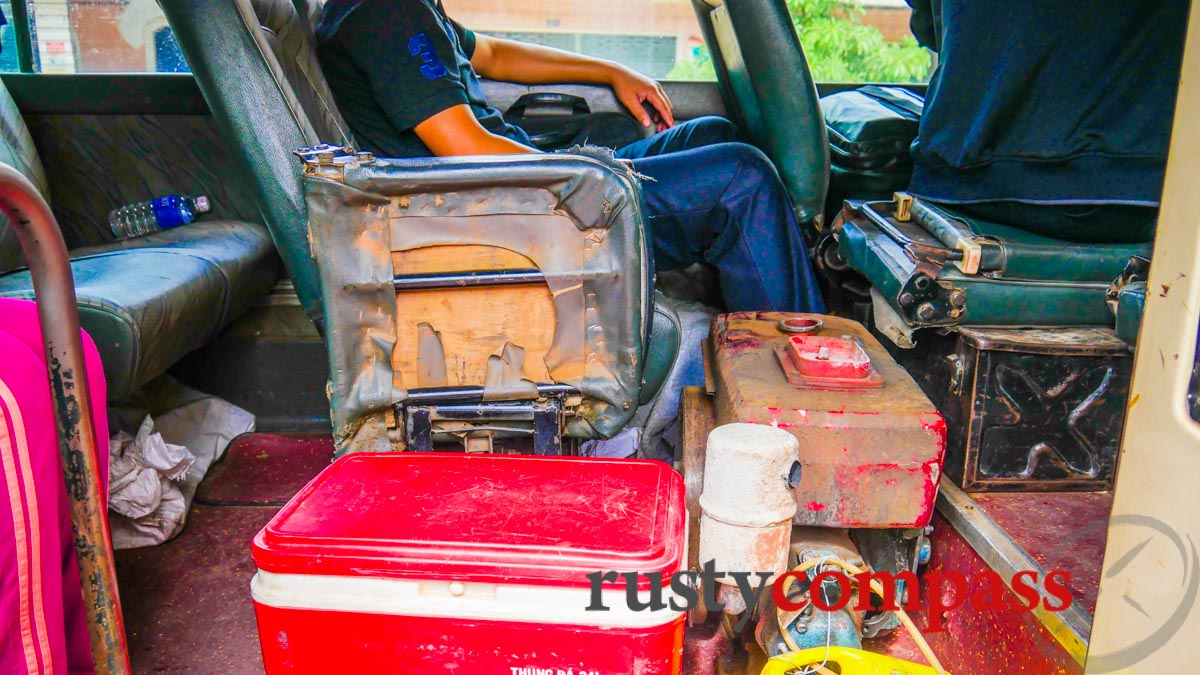
Photo: Mark Bowyer The bus could do with a scrub.
The cargo collection and delivery aspect of our journey occupied 3 - 4 hours of our 11 hours of travelling. If it was a dedicated passenger service, we’d have been in Pakse by mid-afternoon. Alas, we arrived after 7pm.
The road was good throughout - apart from a few small patches of work. Our average speed, while we were travelling, was very good. There was very little traffic either.
The journey ended at Pakse’s eastern bus terminal. Not an ideal arrival point in the dark. Negotiating our way into town from there, it’s around 4 - 5kms, ended up being fairly unpleasant.
We spent a night in Pakse and headed south to Si Phan Don (4000 Islands) first thing the next day for a great week of travel.
I'll be adding more on the southern Laos travels soon.
Travel tips
Distance Kontum to Pakse. Around 400kms
Visas. Lao visas available at the border. Bring pic and $30US (prices vary slightly between countries). If you’re heading to Vietnam, you’ll need to have your visa organised in advance. No visas at the border.
Price: 220,00 per ticket. Unless you’re very short, you’ll probably need 2. Makes it fairly poor value for money by local standards. We booked at Thinh Vuong hotel Kontum.
Quality: Bus quality very poor. Dirty, broken air conditioning. Owners more focused on cargo than passengers.
Experience: It was ok. Not a must as an experience. I like Kontum and Pakse so this seemed like an interesting way to cover the route. Access to Pakse from Vietnam isn’t so easy or cheap. This is probably the easiest overland route between southern Laos and Vietnam.

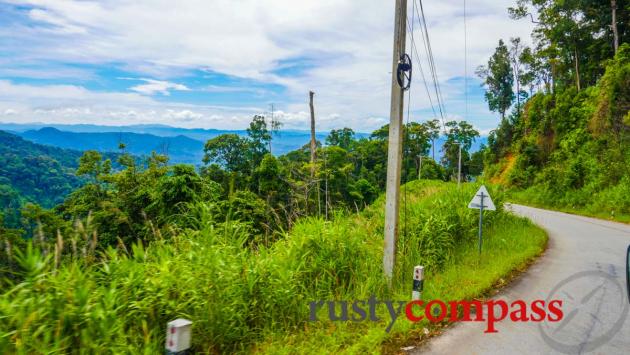



There are no comments yet.